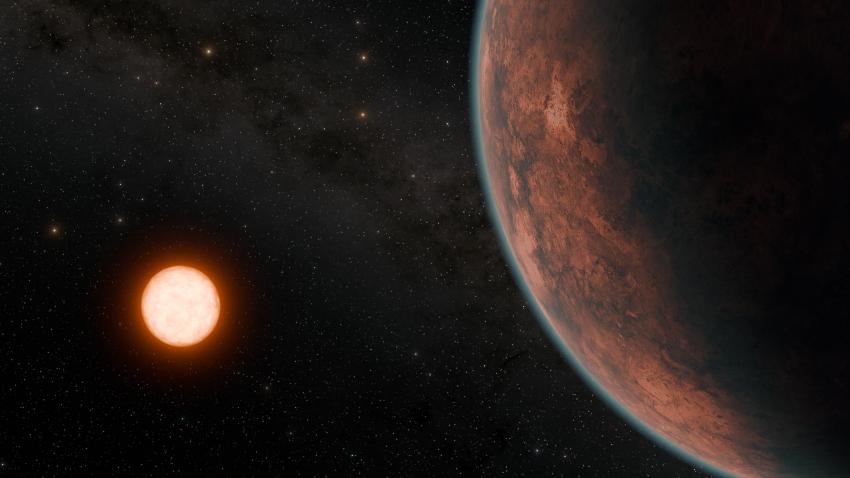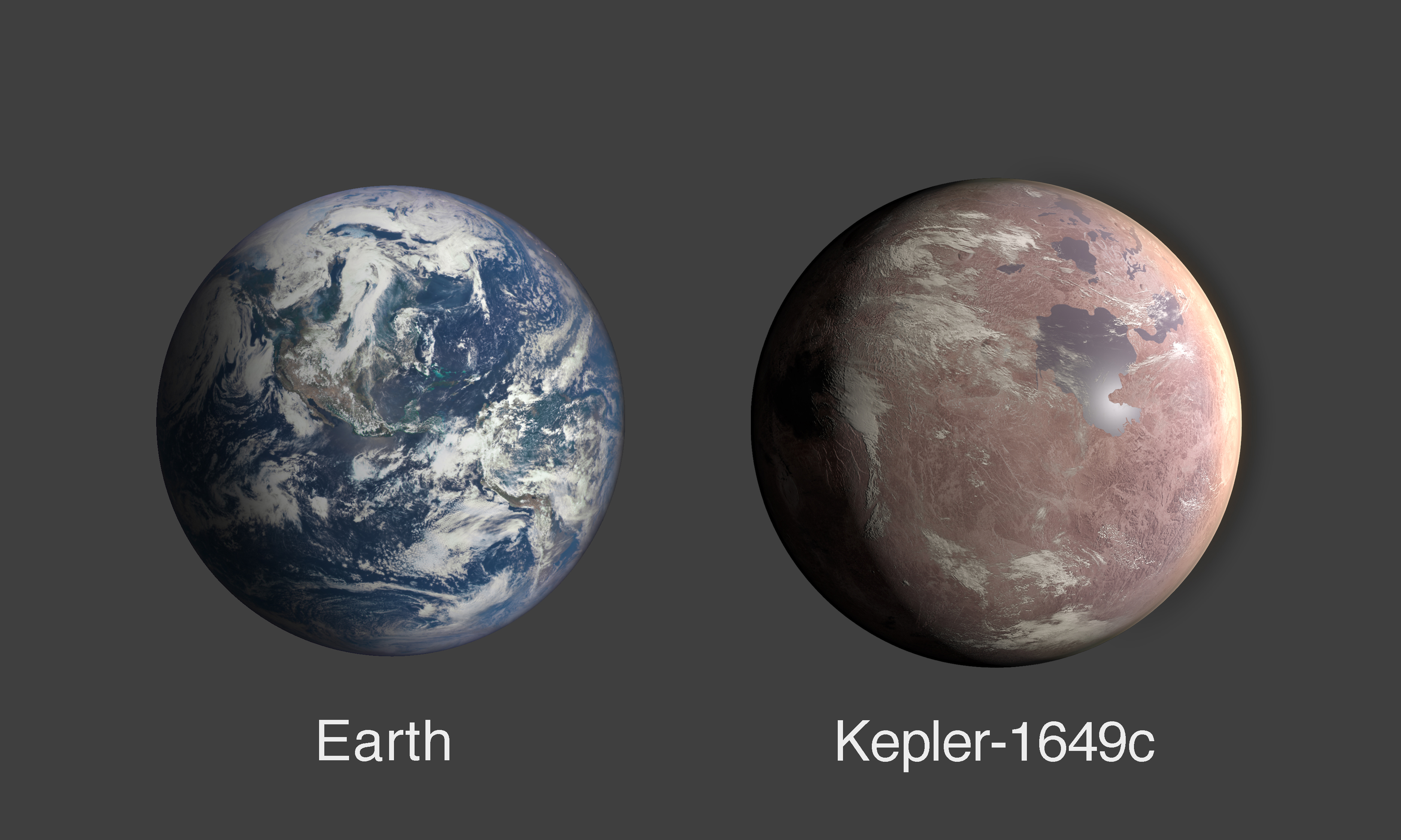Breaking Discovery: 5 Clues This New Exoplanet Is Earth’s Cosmic Twin!
- Update Time : Monday, May 27, 2024

A newly discovery exoplanet exhibits temperatures similar to Earth, sparking excitement among astronomers. This exoplanet’s Earth-like climate raises intriguing possibilities for potential habitability beyond our solar system.
With temperatures comparable to our own planet, this discovery opens up new avenues for research into the existence of life on other celestial bodies. Scientists are eager to study this exoplanet further, hoping to uncover more insights into its composition and atmospheric conditions.
The discovery of a planet with such familiar temperatures renews interest in the search for habitable worlds beyond our own. Excitement is palpable in the scientific community as they delve into the mysteries of this newfound exoplanet.
The Discovery
A newly discovered exoplanet has caught the attention of astronomers, as it boasts temperatures similar to those found on Earth. The initial glimpse of this intriguing find was made possible through powerful telescopes. This discovery is the result of collaborative efforts in space exploration, as scientists and researchers work together to unravel the mysteries of the universe.

Credit: ras.ac.uk
Cosmic Characteristics
A newly discovered exoplanet exhibits similarities to Earth with its almost identical temperatures. This cosmic characteristic opens up possibilities for further exploration and research on habitable planets outside of our solar system.
A newly discovered exoplanet has recently captured the attention of astronomers worldwide. This intriguing celestial body exhibits remarkably similar temperatures to those found on Earth, making it an exciting prospect for further exploration. Orbital patterns and distance play a crucial role in determining the climate of a planet, and in this case, they seem to have aligned quite closely with our own home planet.
Additionally, the atmospheric composition of this exoplanet is of great interest to scientists. By analyzing the gases present in its atmosphere, researchers hope to gain insights into the potential for life to exist beyond Earth. The similarities found in the atmospheric makeup could hint at the possibility of habitability.
Furthermore, surface analysis of the exoplanet will provide valuable data on its geology and potential for supporting lifeforms. Studying the composition of its surface can reveal vital information about the conditions and resources available on the planet.
As scientists continue to study and explore this newfound exoplanet, we may gradually unravel the mysteries of its cosmic characteristics, shedding light on the potential for other habitable worlds in our vast universe.
Similarities With Earth
The newly discovered exoplanet has similar temperatures to Earth, offering exciting possibilities for research. Comparing size and mass shows striking resemblances to our planet.
The exoplanet’s potential for water and life intrigues scientists, hinting at further discoveries in the future.
Technological Triumphs
Advancements in exoplanet research have led to the discovery of a newly found exoplanet that shares similar temperatures to Earth. This technological triumph was made possible by the instruments used in the exploration of exoplanets.
Scientists have developed highly sophisticated instruments capable of detecting and analyzing exoplanets located light-years away from our solar system. These instruments, such as the Kepler Space Telescope and the Transiting Exoplanet Survey Satellite (TESS), have revolutionized our understanding of the universe.
The Kepler Space Telescope, for instance, has been instrumental in identifying thousands of exoplanets by measuring the slight dimming of starlight caused by a planet passing in front of its host star. This method, known as the transit method, has allowed scientists to estimate the size, orbit, and in some cases, the temperature of these exoplanets.
Similarly, TESS has continued the search for exoplanets using the same transit method but with a wider field of view. By observing different sections of the sky for long periods, TESS has been able to detect even more exoplanets, including the one with temperatures similar to Earth.
These technological advancements in exoplanet research are not only expanding our knowledge of the universe but also raising exciting possibilities for the existence of habitable planets beyond our solar system.
Astrophysical Significance
A Newly Discovered Exoplanet Has Almost the Same Temperatures As Earth
The discovery of a new exoplanet has brought a significant impact on the theories of planet formation. The exoplanet, located in the habitable zone of its star, has almost the same temperatures as Earth. This discovery is astrophysical significant because it provides a valuable opportunity to study the characteristics of a planet that is similar to Earth.
This new exoplanet is revolutionizing our place in the universe, as it brings us closer to finding a planet that might sustain life. The discovery of this exoplanet has also provided researchers with new insights into the formation of planets and the conditions required for a planet to be habitable. This discovery has opened up new avenues of research and has increased the chances of finding a planet that is similar to Earth.
| Impact on Theories of Planet Formation |
|---|
| The discovery of this new exoplanet has challenged the current theories of planet formation and has provided new insights into the formation of planets. The similarities between this exoplanet and Earth suggest that there might be other planets in the universe that are similar to Earth and could potentially sustain life. This discovery has also increased the chances of finding more exoplanets in the habitable zone of their stars. |

Credit: www.nasa.gov
Life Beyond Earth
The discovery of a newly found exoplanet has sparked excitement in the scientific community as it has almost the same temperatures as Earth. This discovery has opened up a new avenue of research in the search for extraterrestrial life. The possibility of finding life beyond our planet has always been a topic of interest for scientists, and this discovery brings us one step closer to answering that question.
The search for extraterrestrial life has ethical and philosophical implications. The discovery of life beyond Earth would change our perception of the universe and our place in it. It would also pose questions about how we interact with other forms of life and how we define life itself. The ethical considerations of exploring and potentially interfering with other life forms would need to be carefully considered.
Overall, the discovery of this exoplanet is an exciting development in the search for extraterrestrial life. It raises important ethical and philosophical questions that must be addressed as we continue our exploration of the universe.
Challenges In Exploration
The exploration of a newly discovered exoplanet presents several challenges. The distance from Earth and the travel time required to reach it are significant obstacles. Communication and data transmission from such a distant location also pose difficulties. The need to overcome these challenges is crucial for further exploration and understanding of exoplanets. Researchers are continually working to find solutions to these obstacles, as they are essential for advancing our knowledge of the universe.

Credit: bgr.com
Future Missions And Studies
Future missions and studies will focus on exploring the newly discovered exoplanet and comparing its conditions to those of Earth. Planned spacecraft and probes will be designed to gather data on the exoplanet’s atmosphere, surface features, and potential for supporting life. International cooperation in space science is crucial for sharing resources and expertise in these endeavors. Collaborative efforts will allow scientists from different countries to work together in analyzing the exoplanet’s characteristics and forming a comprehensive understanding of its suitability for sustaining life.
Frequently Asked Questions
What Planet Has The Same Temperature As Earth?
Venus has a similar temperature to Earth, with an average temperature of 462 degrees Celsius. However, due to its thick atmosphere, Venus experiences a runaway greenhouse effect, making it uninhabitable.
What Is The Hottest Exoplanet Ever Discovered?
The hottest exoplanet ever discovered is KELT-9b. It has a surface temperature of over 7,800 degrees Fahrenheit.
What Is 40 Light-years Away From Earth?
40 light-years away from Earth is the star system called Gliese 436.
What Is The Coldest Exoplanet In The Universe?
The coldest exoplanet in the universe is OGLE-2005-BLG-390Lb. It has a surface temperature of approximately -364 degrees Fahrenheit (-220 degrees Celsius).
Conclusion
In light of the recent discovery of an exoplanet with Earth-like temperatures, the potential for habitable worlds beyond our solar system is becoming increasingly apparent. This finding offers hope for further exploration and the possibility of finding other planets that could support life as we know it.
As our understanding of the universe continues to expand, so does the potential for new and exciting discoveries.


















Leave a Reply